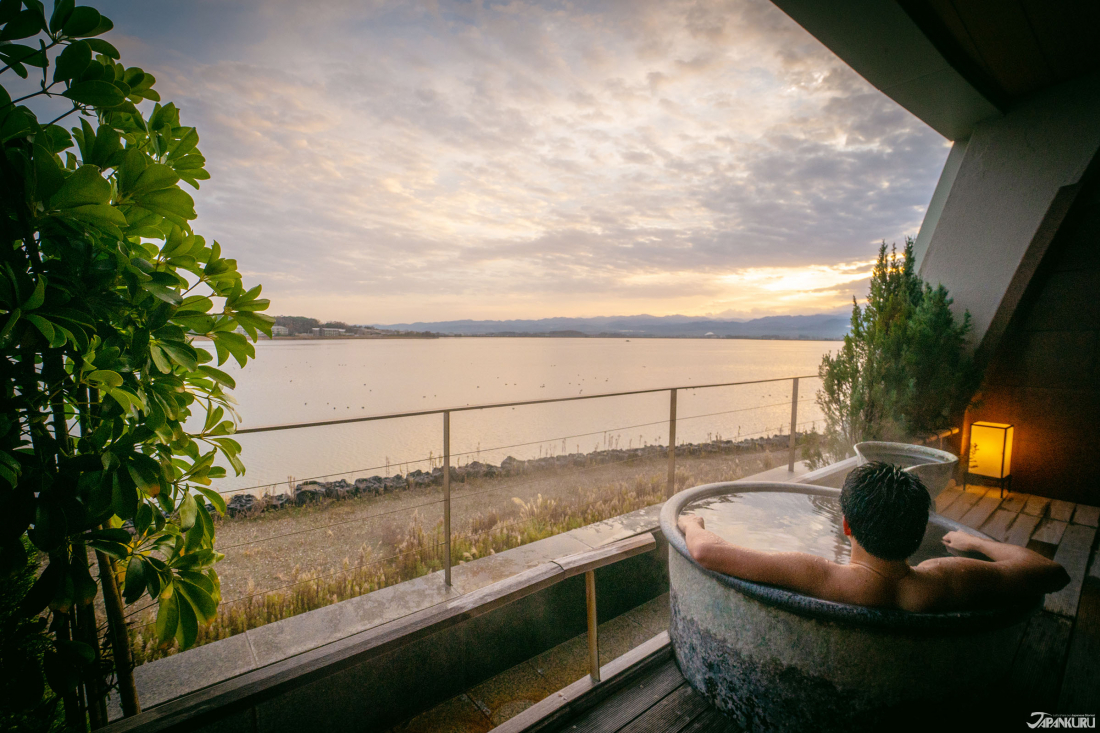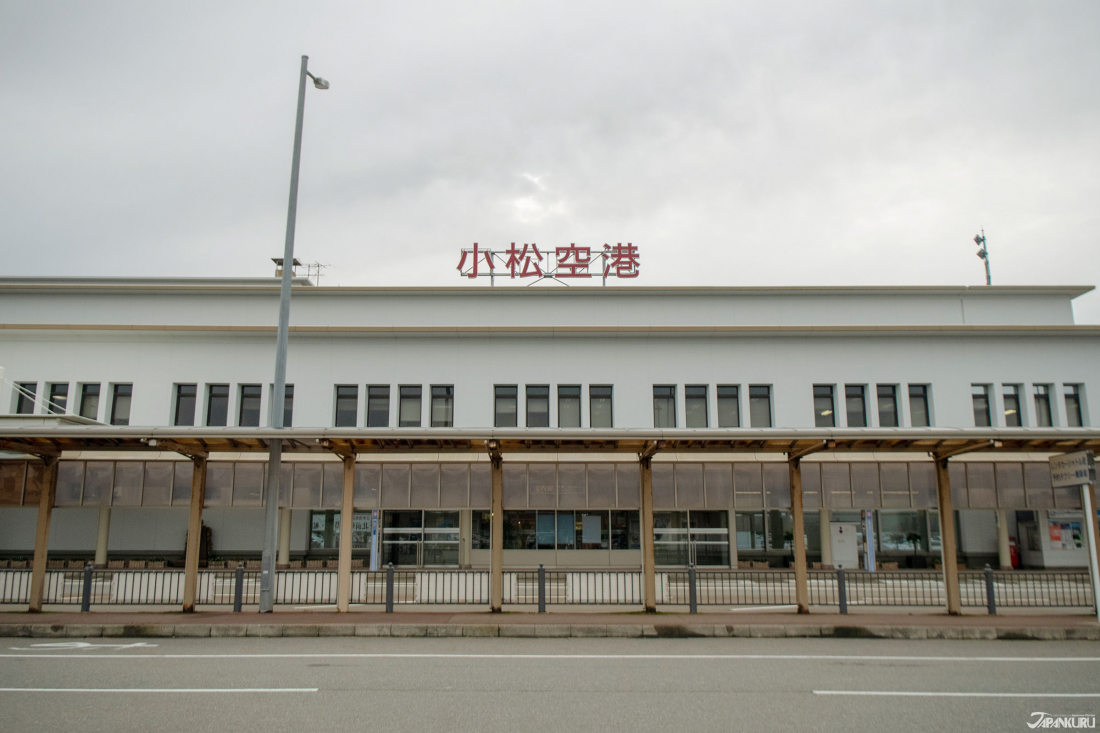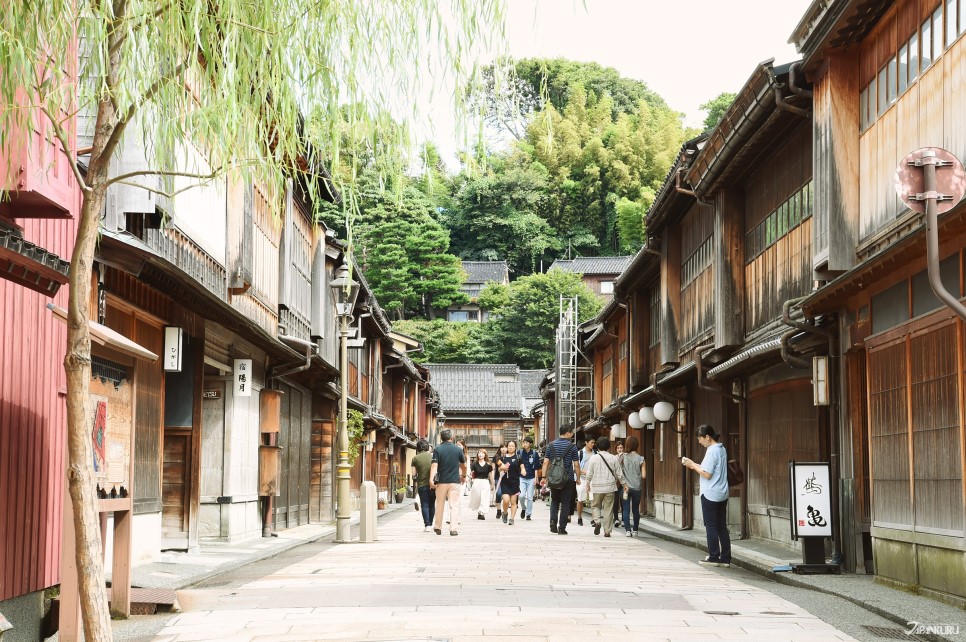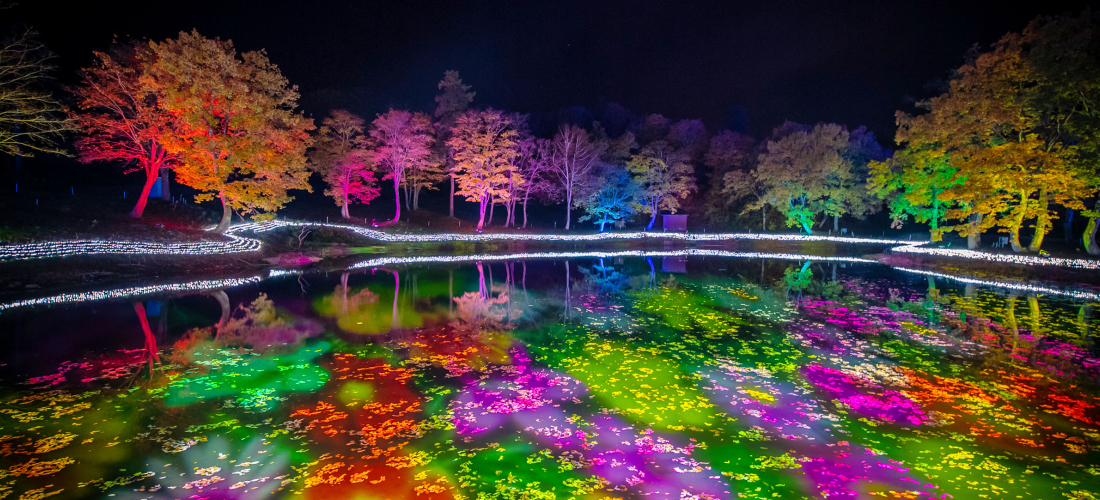
CONTENTS
Apa Hotel & Resort Kasuikyo (佳水郷)
Apa Hotel & Resort Katayamazu Onsen Kasuikyo is a hotel-style hot spring resort located in Kaga, the historic hot spring resort of Kanazawa City, Ishikawa Prefecture.
This area is known as one of the hot spots in the Hokuriku region that is full of beautiful nature like Mount Haku (白山), which is known as Mt. Ishikawa's famous mountain, is 7,270 meters high. Along with Shibayama Lagoon (柴山潟), which changes color seven times a day. The hot spring water in the ground here is calcium chloride and sodium, which it is said to be effective for poor blood flow and skin problems.
Onsen with a View
Katayamazu Onsen has an open-air hot springs bath which is one of Kasuikyo's appealing points. In both male and female baths you can see Lake Hakusan and Shiba Yamagata Lake at all times of the day.
Hokuriku Region's Wide Variety of Dishes
The Hokuriku area is surrounded by the sea and a wide mountain range. For that reason, you can enjoy a variety of foods from season to season using fresh fish from the sea and abundant vegetables from the mountains.
・Katayamazu Onsen Kasuikyo
Google Maps
Car map code: 120 343 658 * 54
One-day hot spring available
Check-in 3pm, Check-out 10am
Information on Booking.com (ENG)

No Hot Springs in Kanazawa
In fact, Kanazawa doesn't have hot springs. However, there are two historic hot spots near Kanazawa that are easily accessible.
1. Kaga Onsen (加賀温泉) Area
(South of Kanazawa)
Katayamazu Onsen (片山津温泉), Yamashiro Onsen (山代温泉), Chuzan Onsen (中山温泉), Awazu Onsen (粟津温泉)
2. Noto Peninsula Region (能登半島)
(North of Kanazawa)
Wakura Onsen (和倉温泉)
Why Recommend Katayamazu??
Mainly because it is closest to Komatsu Airport. It is only 18 minutes by car from Komatsu Airport to Katayamazu Onsen, and you can get to Kanazawa in about 45 minutes. There is an advantage because regardless of you coming in large groups or small, you can go between places in the shortest amount of time.
Access
1. Komatsu Airport (小松空港)
When visiting the Kanazawa area, one way to get here is by plane. They do have international flights to/from Seoul, Shanghai, and Taipei, or you can come by flying within Japan. If you do come by plane, there is a shuttle bus to and from Katayamazu.
You can reserve a shuttle bus here
2. Hokuriku Shinkansen Line (北陸新幹線)
If you are traveling within Japan, taking the bullet train (Shinkansen) is probably the best way to get here. The closest station when taking the Shinkansen is Kanazawa Station, which takes about 2 hours and 30 minutes from Tokyo. After that, transfer to Shirasagi Limited Express (しらさぎ特急) and get off at Kaga Onsen Station (加賀温泉駅) for about 25 minutes. From there you can take a shuttle bus from the station to the resort.
JR Pass Information (ENG)
You can reserve a shuttle bus here
3. Rent a Car
Recently, more and more people are renting cars when they come to Japan. If you rent a car from Kanazawa, there are rental car dealers at both Komatsu Airport and Kanazawa Station, so you can rent a car at either spots easily.
Nissan Rent-a-car Komatsu Airport Branch
Nissan Rent-a-Car Kanazawa Station
Nissan Rent-a-Car Kaga Onsen Station
Hotel-Style Hot Springs Resort
Katayamazu Onsen Kasuikyo (佳水郷) is a hot spring resort that has the hotel, with many rooms and various facilities, a ryokan where you can enjoy tatami mat rooms, Kaiseki dishes, and a hot spring, where you can relax in traditional Japanese fashion. Hotel-style services and both authentic hot springs and cuisine are what makes this hotel a popular destination for many foreigners.
Room Type
There are various types of rooms at Katayamazu Onsen Kasuikyo (佳水郷) which makes it different from your ordinary Japanese ryokan (traditional inn). To give you an idea, below are three types of rooms that are offered at the resort:
1. Mizu (水の棟)
This is a typical Japanese ryokan type room that has tatami flooring and a seating table. When you return to your room after dinner, you will find your futons set up and warmed by the hotel staff which is a great side of Japan's famous ryokan hospitality.
(This type of room is offered in four different sizes)
2. Kisen (輝泉)
Kisen rooms are on the top floor of the hotel and also have tatami mat flooring. Because it is on the top floor, the view is without a doubt the best. There is also a balcony that has a private open-air hot springs bath which is nice for those with tattoos.
(Room divided into bed type and futon type)
3. Hana (華の棟)
Hana is a semi-suite room, which combines a Japanese tatami mat flooring room with a more Western-style room offering beds instead of Japanese futons for those that aren't used to sleeping on the floor.
(This type of room is offered in four different sizes)
Hot Springs “Onsen”
1. Open-Air Bath
The open-air hot springs baths are one of the charms of Kasuikyo. There are not many places to see Mount Haku and Lake Shibayama at the same time in Katayamazu Onsen, but here you can. There also is a fountain in the middle of the lake, which lights up and goes off 13 times a day (15 times in July and August), is about 300ft (70 meters) tall and is said to be one of the most popular fountains in Japan.
2. Panorama Bath
There is also a panorama bath "Tamayura", that gives you a view of 49ft (15 meters) long. Here you can also see Lake Shibayama while you are soaking indoors.
Authentic Kaiseki-Ryori, a Multi-Course Meal
The food that is served is an important factor in selecting a hotel or ryokan. Katayamazu Onsen Kasuikyo offers a wide variety of colorful dishes, taking advantage of the Kanazawa region where all sorts of sea and land delicacies are gathered. Authentic kaiseki dishes made with the freshest seasonal ingredients gives you a unique taste into Japan's food culture.
Kanazawa area brand wagyu "Noto Beef (能登牛) Shabu-shabu"
The Kaiseki-ryori dishes served are fresh mountain produce and seafood that are picked that day.
Tatami type
(Sit on a tatami mat and eat in a traditional Japanese way)
Table type
(Or sit on a chair eat at a table)
Breakfast Buffet
A huge area to eat with an equally large breakfast buffet in the background.
There are a range of dishes to choose from for breakfast.
Breakfast buffets are always great!
Hotel Entertainment
Just like some of Japan's bigger and older hotels, there are entertainment rooms and shops that you can also visit.
A recreation room that has activities like pool, ping pong, and karaoke.
Also every night at 8:30, there are live performances held in the hotel.
And of course a shop where you can buy things you need or want like local sake, food, and souvenirs.
Popular Sightseeing Spots in Kanazawa
Kanazawa, where Katayamazu Onsen is located, is a place where you can see much of Japan's ancient and traditional charms it's nicknamed the second Kyoto. Since it has not suffered from a war or natural disaster in about 400 years, buildings, nature, and culture remains. If you go to Kanazawa, here are some popular sightseeing places to visit.
1. Kenrokuen Garden (兼六園)
Known as one of the 3 most beautiful gardens in Japan, Kenrokuen has a wide variety of trees, flowers, and plants (cherry blossom, autumn trees, plum blossoms, etc) giving this park many looks every season regardless spring, summer, fall, or winter. Which is something rare at many gardens.
2. Higashi Chaya District (東茶屋街)
Higashi Chaya is known as the geisha district, when the whole area was filled with teahouses where geisha would entertain during the Edo period. There are different districts, but Higashi Chaya (East Chaya) is the most popular of the three as well as the biggest. Going here lets you see many old Japanese teahouses and buildings while not being bothered by huge crowds like you would in Kyoto. Also, for you "Memoirs of a Geisha" fans, the Hollywood movie was shot here!
3. Omicho Market (近江町市場)
A must for food lovers, Omicho Market is Kanazawa's largest food market that has been around since the Edo period. A majority of the market lets you can enjoy local food but you can also find gifts and random items for sale as well.
Eating in Kanazawa
1. Yamasan Sushi Honten (山さん寿司)
If you visited Omicho Market, one place worth eating there is Yamasan Sushi Hoten, which is a local favorite. Kanazawa is well-known for its fresh and abundant seafood, and here they serve massive amounts of fresh Kanazawa seafood rice bowls.
Seafood Rice Bowl (海鮮丼) 3000yen
Google Maps
Official website (JPN)
2. Hakuichi Gold Leaf Ice Cream
Kanazawa is known as the largest gold leaf-producing area in Japan even to this day, which is why it's known by the name of "Kanazawa leaf". Gold leaf crafts or art is one thing, but gold leaf food!? There are a number of gold leaf food and drinks like gold leaf wine and pound cake, but gold leaf ice cream the most popular of them all and the most fun to eat!
Gold Leaf Ice Cream 891yen
Google Maps
Official website
One Hour from Tateyama Kurobe Alopen Route
Alpen Route is a mountain sightseeing route that passes through Tateyama Mountain, which is called Japan's Alps. The area is famous for its snowy areas, and it is especially popular with foreign visitors because it is about 20 meters high and can be walked 10 floors high. It takes about one hour by car from Tateyama Station with Alpine Route in Kanazawa, and about 30 minutes from Toyama Station by Shinkansen. Please note that as of February 2019, winter operations have been terminated and mountainous cable cars can be seen from April 15th to November 30th, 2019 in mountainous areas.
Official website (ENG)
"Kaga", a historical hot spring resort in Japan. Among them, "Katayamazu Onsen", where the combination of good quality hot spring water and mountain and lake is superb. Katayamazu Onsen Resort "Kasui-kyo" combines the advantages of a ryokan with superb hot springs and sumptuous cuisine, plus the hotel's wide range of guest rooms and services. Since I operate a direct flight from Korea to Komatsu Airport, I think that it is a place where I can visit my parents, couples, and friends freely.
・Katayamazu Onsen Kasuikyo
Google Maps
Car map code: 120 343 658 * 54
One-day hot spring available
Check-in 3pm, Check-out 10am
Information on Booking.com (ENG)

Be sure to look at JAPANKURU
Or add us on Instagram and Facebook to share your Japanese pictures
Details
NAME:Katayamazu Onsen Kasuikyo
MAP
Katayamazu Onsen, Kaga-shi, Ishikawa
ACCESS:Kagaonsen Station











































 >> Find out more at Japankuru.com! (link in bio)
#
>> Find out more at Japankuru.com! (link in bio)
#





 The Robot Restaurant is gone, but the Samurai Restaurant is here to take its place. Check it out, and don't forget your coupon!
The Robot Restaurant is gone, but the Samurai Restaurant is here to take its place. Check it out, and don't forget your coupon!
 신주쿠의 명소 로봇 레스토랑이 사무라이 레스토랑으로 부활! 절찬 쿠폰 발급중
신주쿠의 명소 로봇 레스토랑이 사무라이 레스토랑으로 부활! 절찬 쿠폰 발급중
 18歲以上才能入場的歌舞秀,和你想的不一樣!拿好優惠券去看看~
#tokyo #shinjuku #samurairestaurant #robotrestaurant #tokyotrip #도쿄여행 #신주쿠 #사무라이레스토랑 #이색체험 #할인이벤트 #歌舞伎町 #東京景點 #武士餐廳 #日本表演 #日本文化體驗 #japankuru #japantrip #japantravel #japanlovers #japan_of_insta
18歲以上才能入場的歌舞秀,和你想的不一樣!拿好優惠券去看看~
#tokyo #shinjuku #samurairestaurant #robotrestaurant #tokyotrip #도쿄여행 #신주쿠 #사무라이레스토랑 #이색체험 #할인이벤트 #歌舞伎町 #東京景點 #武士餐廳 #日本表演 #日本文化體驗 #japankuru #japantrip #japantravel #japanlovers #japan_of_insta
 코지마 x 빅 카메라 쿠폰으로 일본 가전 제품 쇼핑하기
#pr #japankuru #japanshopping #kojima #biccamera #japaneseskincare #yaman #dji #osmopocket3 #skincaredevice #日本購物 #美容儀 #相機 #雅萌 #日本家電 #일본여행 #면세 #여행꿀팁 #일본쇼핑리스트 #쿠폰 #일본쇼핑 #일본브랜드 #할인 #코지마 #빅카메라 #japankurucoupon
코지마 x 빅 카메라 쿠폰으로 일본 가전 제품 쇼핑하기
#pr #japankuru #japanshopping #kojima #biccamera #japaneseskincare #yaman #dji #osmopocket3 #skincaredevice #日本購物 #美容儀 #相機 #雅萌 #日本家電 #일본여행 #면세 #여행꿀팁 #일본쇼핑리스트 #쿠폰 #일본쇼핑 #일본브랜드 #할인 #코지마 #빅카메라 #japankurucoupon






















































